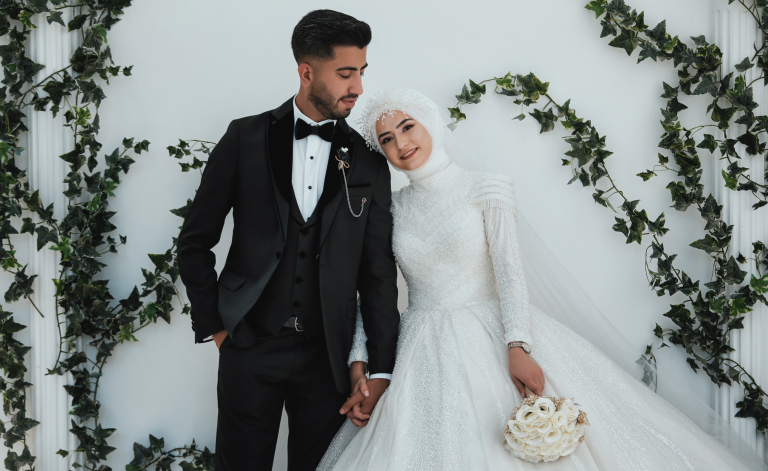Proposal & Engagement: Tradition Meets Modernity
In South African Muslim communities especially in Cape Town a formal proposal typically unfolds with the groom visiting the bride’s father to seek her hand. The bride’s consent has the final say, reinforcing both familial respect and individual choice.
Indian Muslim families often mark this step with a mangla ceremony, a gathering where the groom arrives and engagement gifts and sweets are presented. The bride sits on a stage, and her acceptance is often symbolized through jewelry, received either by herself or placed by the groom’s female relatives.
Pre-Wedding Celebrations: Henna, Heritage & Harmony
-
Mehndi Night: A festive and deeply cultural affair, especially among Cape Malay and Indian Muslim communities. Female relatives and friends gather for singing, drumming, intricate henna designs, and traditional treats like koesisters, boeber, tassies, biryani, and gulab jamun.
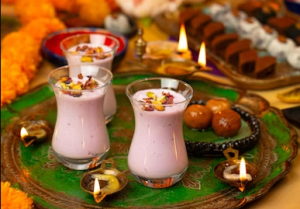
-
Thika Ceremony: Common among Indian Muslims, this pre-nikah practice symbolizes mutual blessing and respect between the families.
Nikah: A Sacred Contract of Union
-
Ceremony Essentials: The nikah is the Islamic marriage contract, often held in a mosque or family home and officiated by an Imam. It requires the presence of witnesses, the bride’s guardian (wali), and the exchange of mahr (dowry), reflecting commitment and respect.
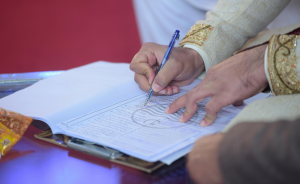
-
Cultural Nuances: In some cases, the bride remains at home while the nikah ceremony proceeds elsewhere, her absence doesn’t diminish the bond once established. After the formal vows, they may exchange rings or share an intimate moment.
Receptions (Walima): Feasts of Faith & Family
-
Purpose & Religious Significance: The Walima is a sunnah, a celebratory feast to announce the marriage publicly and ideally held after consummation. In the Western Cape, however, it’s commonly hosted on the wedding day, regardless of consummation timing.
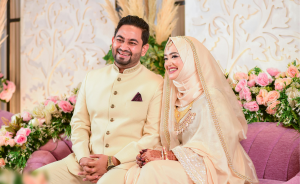
-
Variations by Community: Indian Muslim weddings typically feature a single reception, while Cape Malay families may host two: one after the nikah and another later in the day.
-
Venue & Atmosphere: Unlike extravagant venues, many South African Muslim families opt for local halls or familiar settings for ease and comfort. Luncheon receptions are common, though Cape Malay weddings may include both lunch and dinner feasts.
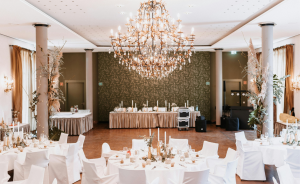
Rukhsati & Cultural Rituals: Farewell with Reverence
In Cape Malay tradition, the bride’s departure occurs with deep emotion and ritual:
-
After initial festivities, the bride is escorted off the stage by a female delegation called the Hadjies, carrying a shawl placed over her shoulders.
-
Guests recite Salawaat (praises for the Prophet ﷺ) as she leaves, transitioning into married life with prayers and blessings.
Legal Recognition & Registration: Protecting Marriage Rights
-
Historical Context: Muslim nikah ceremonies historically lacked recognition under South African civil law, often leaving couples unprotected in matters of inheritance, divorce, or property (De Rebus).
-
Legal Progress:
-
2020 Ruling: The Supreme Court of Appeal ruled that non-recognition was unconstitutional, prompting reforms (Fairbridges Wertheim Becker).
-
Imams as Marriage Officers: Accredited ulama can now register marriages directly with the Department of Home Affairs, enabling official certification of Muslim marriages and aligning them with civil law (Jamiatul Ulama KZN).
-
2024 Milestone: The Department of Home Affairs began officially recognizing nikah marriages, allowing full civil validation, and even retroactive marriage certificate issuance (fwdeklerk.org).
-
-
Documentation Requirements: To register the marriage, couples generally need their nikah certificate, IDs, details of the mahr, and affidavits from both spouses and witnesses. A small registration fee applies, with processing taking up to five days (aljama.co.za).
Attire & Modesty: Reflecting Faith and Culture
-
Cultural Dress: Brides often choose attire that blends modesty with cultural motifs, Cape Malay brides may don lace and satin gowns, while Indian Muslim brides might wear vibrant lehengas or saris, rich in beadwork and embroidery.
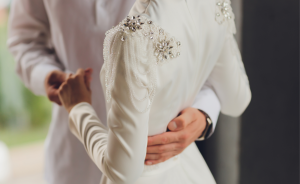
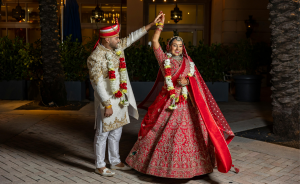
-
Mosque Etiquette for Guests:
“Make-up would be fine but probably nothing too bold… you’ll need to remove your shoes… borrow an abaya and scarf for the mosque”
-
Gender Separation and Modesty: While some ceremonies maintain gender separation with curtains or designated areas, it’s not mandatory. Guests are encouraged to dress modestly in line with Islamic values
Guest Attire for South African Muslim Weddings: A Detailed Guide
Let’s explore what guests should wear to a South African Muslim wedding, blending local cultural flair with respect for religious tradition.
Modesty at the Core
Islamic tradition emphasizes modesty, referred to as haya which translates into how one dresses at such events. Here’s what to keep in mind:
-
Women should wear outfits that cover shoulders, chest, and legs. Avoid revealing or skin-tight clothes. Modest dresses or skirts that fall below the knee, paired with long sleeves or shawls, are ideal.
-
Men are expected to wear formal or semi-formal attire, think long-sleeved shirts with trousers, or even traditional wear if available.
-
Head coverings: If the ceremony, like the Nikah is held in a mosque or a religious setting, women (and even some men) should cover their heads. Carrying a scarf or shawl is highly recommended.
A guest shared:
“In the mosque you’ll need to remove your shoes… borrow an abaya and scarf for the mosque.”
Colour & Styles
-
Avoid wearing black, white, or red:
-
Black can be associated with mourning.
-
White may be reserved for the bride or seen as inappropriate in some communities.
-
Red might also be reserved for the bride in certain cultures (e.g., South Asian).
-
-
Recommended colours include jewel tones such as emeralds, teals, purples, golds, dusty pinks, and vibrant pastels, celebratory without overshadowing the couple.
Cultural Inspiration & Local Flair
South African Muslim weddings often reflect both Cape Malay and Indian Muslim cultural influences. Guests may embrace:
-
Cape Malay aesthetics, with soft gowns and lace detailing paired with delicate wraps, as seen in the inspiration photo above.
-
Indian Muslim styling, featuring lehengas, anarkalis, or embroidered salwar kameez in vibrant or pastel hues, balanced with modest coverage and layered sensibly.
Practical Tips for Comfort & Respect
-
Shoes: Easy-to-remove footwear like flats or mules is ideal, especially if part of the ceremony takes place on prayer carpets or the mosque floor.
-
Accessorize thoughtfully:
-
Women may add jewelry or bangles, but keep it refined so as not to outshine the bride.
-
For head coverings, delicate scarves or South African “doeks” (optional) can add elegance and cultural connection.
-
Community Etiquette & Departure
Gentle reminders:
-
Dress to honour the culture and religion of the wedding, South African Muslim ceremonies value both tradition and warmth.
-
Guests tend to dress modestly throughout not only during religious segments.
| Guest Role | Men’s Attire | Women’s Attire | Style & Colors |
|---|---|---|---|
| Nikah / Mosque Portion | Long sleeves, formal shirt or traditional attire | Long sleeves, covered legs; optional head covering | Jewel or pastel tones, modest styles |
| Reception / Walima | Suits or cultural dress | Embellished outfits (lehenga, kaftan) with modest coverage | Bright colors, tasteful bling |
| Footwear | Easy-to-remove shoes | Flats, low heels or closed shoes | Practical yet elegant |
| Accessories | Minimal jewelry | Delicate accessories, optional scarves/headwraps | Reflect cultural aesthetics thoughtfully |
South African Muslim weddings, particularly in Cape Town, beautifully blend Islamic values with local cultural identities. From meaningful rituals like the mangla and Mehndi, to the solemn nikah, joyous walima, and poignant rukhsati, each moment is filled with faith, family, and community. And with evolving legal frameworks now recognizing nikah marriages officially, couples can enjoy both religious fulfillment and civil protection.
Featured Image: Canva

